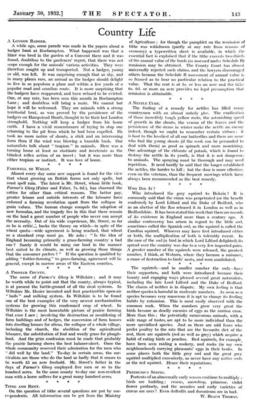The squirrels—and in smaller number the owls —have their supporters,
and both were introduced because their beauty and engaging ways pleased several great naturalists, including the late Lord Lilford and the Duke of Bedford. The charm of neither is in dispute. My own feeling is that neither species is harmful in moderate numbers. As soon as a species becomes very numerous it is apt to change its feeding habits by extension. This is most easily observed with the common rook. When the numbers grow very great the birds become as deadly enemies of eggs as the carrion crow. More than this : the potentially carnivorous animals, with a wide range of tastes, are apt to be more individual than the more specialized species. Just as there are odd foxes who prefer poultry to the rats that are the favourite diet of the rest, there are squirrels (red as well as grey) which acquire a habit of eating birds or peaches. lied squirrels, for example, have been seen raiding a rookery, and rooks (in my owl neighbourhood) carrying pheasants' eggs in their beaks. In some places both the little grey owl and the great grey squirrel multiplied excessively, as never have any native owls or the red squirrel. Hence their reputations.




































 Previous page
Previous page